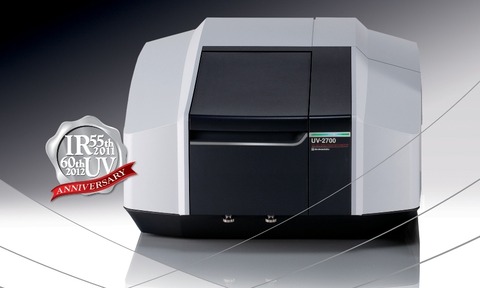
Shimadzu’s compact diffraction grating innovation claims to be a new benchmark in molecular spectroscopy.
The company’s new Lo-Ray-Ligh diffraction grating heralds the first serious advance in grating technology for many years and paves the way for more compact instruments in the reference and upper research sectors.
The new grating, which was created by Shimadzu R&D in Japan, uses the company’s new holographic exposure method and optimised etching process to make it possible to produce both highly efficient and exceptionally low stray light gratings.
The grating technology is now installed in Shimadzu’s UV-2600 and UV-2700 model UV spectrophotometers.
The UV-2600 is a single monochromator system, which is able to read to 5 Absorbance, and offers a wavelength range to 1400nm with the newly developed dual-detector ISR-2600 Plus integrating sphere.
The instrument’s high performance figures eclipse conventional spectrophotometers in both absorbance and wavelength range, whilst also providing baseline flatness and noise performance at least equal to any but the most expensive reference grade instruments.
The new Shimadzu UV-2700 uses a dual-monochromator to extend the linear dynamic range to in excess of 8 Absorbance.
The UV-2700 is a third of the weight and size of the full-size reference grade systems.
“The new spectrophotometer is ideal for research groups focused on analysis in the near infra-red (up to 1400nm) such as carbon nanotube and communications applications,” said Dr Robert Keighley, Shimadzu’s Spectroscopy & TOC Business Manager.




